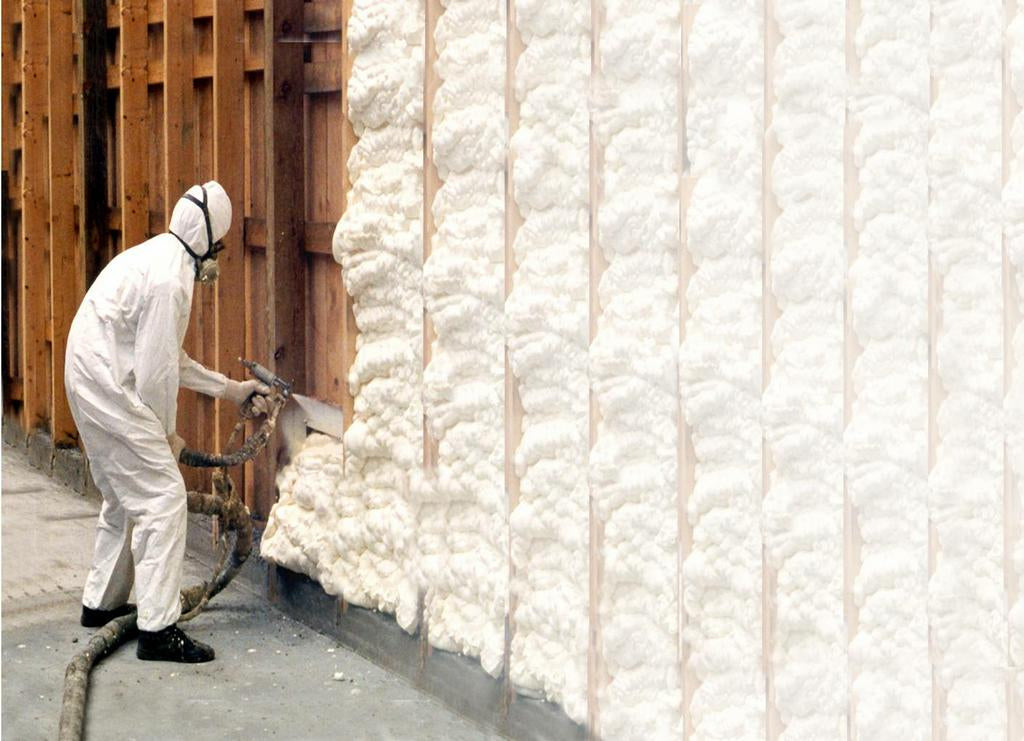Is Spray Foam Insulation Safe? Introduction
Spray foam insulation has been a topic of much discussion in home insulation, particularly concerning its safety. This comprehensive guide will explore whether spray foam insulation is safe, focusing on its curing process, impact on indoor air quality, and long-term effects.
Understanding Spray Foam Insulation
Before delving into the safety aspects, it's essential to understand what spray foam insulation is. This material, used in various forms in homes and buildings, is lauded for its superior insulation properties. But questions like "Does spray foam insulation cause cancer?" and "Is spray foam insulation safe to breathe?" are common among health-conscious individuals.
Is Spray Foam Insulation Safe After It Cures?
One of the critical safety concerns is whether spray foam insulation becomes safe after it cures. Generally, spray foam does not emit harmful chemicals once fully cured and is considered stable and secure. However, the curing process and the conditions under which the foam is applied are crucial to ensuring its safety post-installation.
Learn More: Is Foam Insulation Safe for Health?
Safe Spray Foam Insulation: Best Practices
Ensuring the safety of spray foam insulation involves following best practices in its application. This includes proper installation by certified professionals, adequate ventilation during and after application, and adherence to manufacturer guidelines.
Spray Foam Insulation Safe for Indoor Air Quality
Assessing Air Quality Concerns
The impact of spray foam insulation on indoor air quality is a significant concern. When properly installed and cured, spray foam should not adversely affect air quality. However, improper installation can lead to off-gassing volatile organic compounds (VOCs), impacting indoor air.
Long-Term Effects of Spray Foam Insulation
Evaluating Health Impacts
Understanding the long-term effects of spray foam insulation is crucial for homeowners. Research indicates that spray foam does not release harmful chemicals once cured and is considered safe. However, continuously monitoring industry studies and reports is essential to stay updated on emerging health concerns.
Learn More: Is it Safe to Be in The House During Spray Foam Insulation?
Is Spray Foam Insulation Safe for Pets?
Pet owners often ask, "Is spray foam insulation safe for pets?" The answer largely depends on ensuring proper installation and curing. Once fully cured, it is generally safe, but pets should be kept away during the installation process to avoid exposure to fumes.
Spray Foam Insulation Mortgage Problem
Financial and Insurance Considerations
The question of a spray foam insulation mortgage problem arises from concerns about insurance and property value. While spray foam insulation can improve energy efficiency, some lenders and insurers may have specific requirements or concerns due to the perceived risks associated with improper installation.
Debunking Myths: Does Spray Foam Insulation Cause Cancer?
This section addresses the alarming concern of whether spray foam insulation causes cancer. Current research indicates no direct link between adequately installed spray foam insulation and cancer. However, it is crucial to understand the chemicals used in the product and take necessary safety precautions during installation.
Is Spray Foam Insulation Safe to Breathe?
Focusing on respiratory health, this section examines if spray foam insulation is safe to breathe. Once cured, it should not pose respiratory risks. However, adequate ventilation is vital to ensure safety during and immediately after installation.
How Long Does Spray Foam Insulation Off-Gas?
Addressing concerns about off-gassing, this part explores how long spray foam insulation is off-gase. The off-gassing period can vary, but most products significantly reduce off-gassing within 24 to 48 hours after installation, provided the installation is correctly done.
Navigating Installation and Safety Protocols
Ensuring Safe Application
The safety of spray foam insulation is significantly influenced by its installation process. Professional installation by certified technicians is crucial. These experts understand the nuances of handling and applying the foam, ensuring it cures appropriately and poses no health risks during application. Homeowners should ensure that installers follow all safety protocols, including using protective gear and proper ventilation.
Addressing Environmental Concerns
Eco-Friendly Aspects of Spray Foam Insulation
While discussing whether spray foam insulation is safe, it's also essential to consider its environmental impact. Modern spray foam products are being developed to be more eco-friendly, with reduced VOC emissions and greener chemical compositions. Understanding the ecological footprint of different spray foam products can help make a more sustainable choice.
Common Misunderstandings in Spray Foam Insulation
Clarifying Misconceptions
There are several misunderstandings about spray foam insulation that need clarification:
- Chemical Sensitivity: While some individuals may have sensitivities to the chemicals used in spray foam, once cured, it should not pose a risk to most people.
- Retrofitting Concerns: Homeowners often worry about retrofitting old homes with spray foam. However, with professional guidance, spray foam can be safely used in older buildings.
The Role of Ventilation in Maintaining Indoor Air Quality
Importance of Proper Ventilation
Proper ventilation ensures that spray foam insulation does not negatively impact indoor air quality. This includes ventilation during installation and maintaining good air circulation in the home post-installation. It helps mitigate any potential off-gassing effects and maintains a healthy indoor environment.
Health and Safety Certifications
Understanding Industry Standards
Knowing spray foam insulation products' health and safety certifications can offer peace of mind. Products that meet stringent industry standards and have undergone rigorous testing for emissions and safety provide an additional layer of assurance regarding their safety in residential applications.
Read More: Is Spray Foam Insulation a Good Idea?
Spray Foam Insulation in Special Environments
Considerations for Unique Settings
Special considerations must be made when using spray foam insulation in unique settings like metal buildings or areas with high humidity. These environments may require specific types of spray foam or additional protective measures to ensure the insulation remains safe and effective.
Reviewing Studies and Research
Keeping Up with the Latest Findings
Staying informed with the latest studies and research on spray foam insulation is essential for understanding its long-term safety implications. This section will delve into recent scientific findings, health studies, and industry research to provide a well-rounded view of the safety of spray foam insulation.
Precautions for Sensitive Groups
Special Considerations for Children and Pets
Taking extra precautions is vital for households with children, pets, or individuals with chemical sensitivities. Discussing options with installation professionals and considering temporary relocation during installation are prudent measures.
Spray Foam Insulation and Fire Safety
Assessing Fire Resistance
The fire resistance of spray foam insulation is another safety aspect to consider. Many spray foam products are treated with fire retardants to improve fire resistance. Understanding how spray foam reacts in fire situations and the protective measures in place is essential for overall home safety.
Read More: Is Spray Foam Insulation Flammable?Exploring Alternatives to Spray Foam Insulation
Weighing Other Options
Exploring alternatives can be beneficial for those still concerned about spray foam insulation. Options like fiberglass, cellulose, or mineral wool insulation provide different benefits and may be more suitable for specific individuals or scenarios. Understanding the pros and cons of these alternatives compared to spray foam is crucial in making an informed decision.
The Future of Spray Foam Insulation
Technological Advancements and Safety Innovations
The insulation industry continuously evolves, and spray foam insulation is no exception. Advances in technology and chemistry are paving the way for newer, safer, and more environmentally friendly spray foam products. Keeping abreast of these advancements helps homeowners choose insulation solutions that are effective and align with the latest safety standards.
DIY vs. Professional Installation
Assessing the Risks and Benefits
While DIY spray foam insulation kits are available, assessing the risks and benefits is essential. Professional installation usually ensures better safety and efficacy, as experts are trained in handling the chemicals and have knowledge of proper application techniques. Understanding the complexities and safety measures is crucial for DIY enthusiasts before undertaking such a project.
Insurance and Warranty Considerations
Understanding the Long-Term Implications
Homeowners should also consider the insurance and warranty implications when opting for spray foam insulation. Some insurance policies have specific clauses regarding spray foam, and warranties can be affected by the type of insulation used. It's advisable to consult with insurance providers and understand the warranty terms before deciding.
Cost vs. Value Analysis
Evaluating the Investment
Conducting a cost vs. value analysis is beneficial when considering spray foam insulation. This includes the upfront cost, potential energy savings, the impact on property value, and long-term health and safety benefits. This comprehensive evaluation helps determine whether spray foam insulation is a viable and valuable investment for your home.
Read More: Cost of Spray Foam Insulation
Addressing Specific Health Concerns
Safety for Individuals with Health Conditions
Understanding the implications of spray foam insulation is vital for individuals with specific health conditions like allergies or chemical sensitivities. Consulting with healthcare professionals and choosing formulations with lower chemical emissions can help make a safe choice.
Installation Safety Guidelines
Critical Practices for a Safe Application
Following installation safety guidelines is paramount for both installers and homeowners. This includes ensuring proper ventilation, using protective equipment, following manufacturer instructions, and allowing sufficient curing time before reoccupying the space.
Community Feedback and Experiences
Learning from Real-Life Applications
Exploring community feedback, such as forums and homeowner experiences, can provide additional insights into the safety and efficacy of spray foam insulation. These real-life experiences can highlight common issues, tips, and satisfaction levels, offering a broader perspective on its practical application and safety.
Conclusion
In summary, "Is spray foam insulation safe?" is nuanced and requires careful consideration of various factors. By understanding the properties of spray foam, following safety protocols, staying informed about advancements, and weighing alternatives, homeowners can make informed decisions that balance comfort, efficiency, and safety. Remember, the right insulation choice aligns with your home's needs, your health concerns, and your environmental values.
FAQs on Spray Foam Insulation
Is There a Downside to Spray Foam Insulation?
Yes, there are some downsides to consider with spray foam insulation:
- Cost: It tends to be more expensive than traditional insulation materials like fiberglass or cellulose.
- Installation: Requires professional installation for optimal safety and effectiveness.
- Chemical Sensitivity: Some individuals may have sensitivities to the chemicals used in spray foam, particularly during and shortly after installation.
- Over-Insulation Risk: If not correctly applied, it can lead to over-insulation, trapping moisture and potentially causing mold issues.
- Hard to Modify: Once cured, spray foam is rugged to remove or modify, which can be challenging in future renovations.
When Should You Not Use Spray Foam?
You should avoid using spray foam insulation:
- In Areas Requiring Frequent Modifications: Due to its permanence and difficulty to remove.
- If You Have Chemical Sensitivities: Especially if the off-gassing during the curing process could pose a health risk.
- In Very Old Homes Without Proper Assessment: Older homes may require additional considerations for ventilation and moisture.
- Without Adequate Ventilation: Proper ventilation is crucial during and immediately after installation.
How Long Until Spray Foam Is Safe?
Spray foam insulation is generally considered safe after fully cured, typically taking about 24 to 48 hours. However, this can vary depending on the product, thickness, and environmental conditions. Following the manufacturer's guidelines and ensuring proper ventilation during this period is essential.




